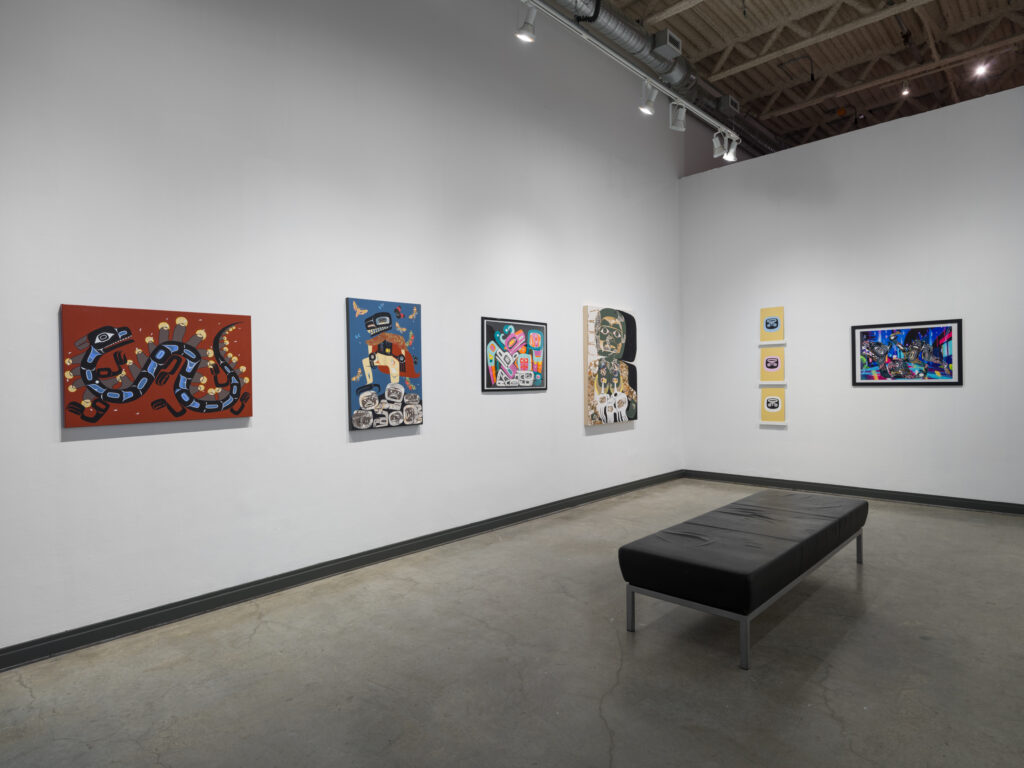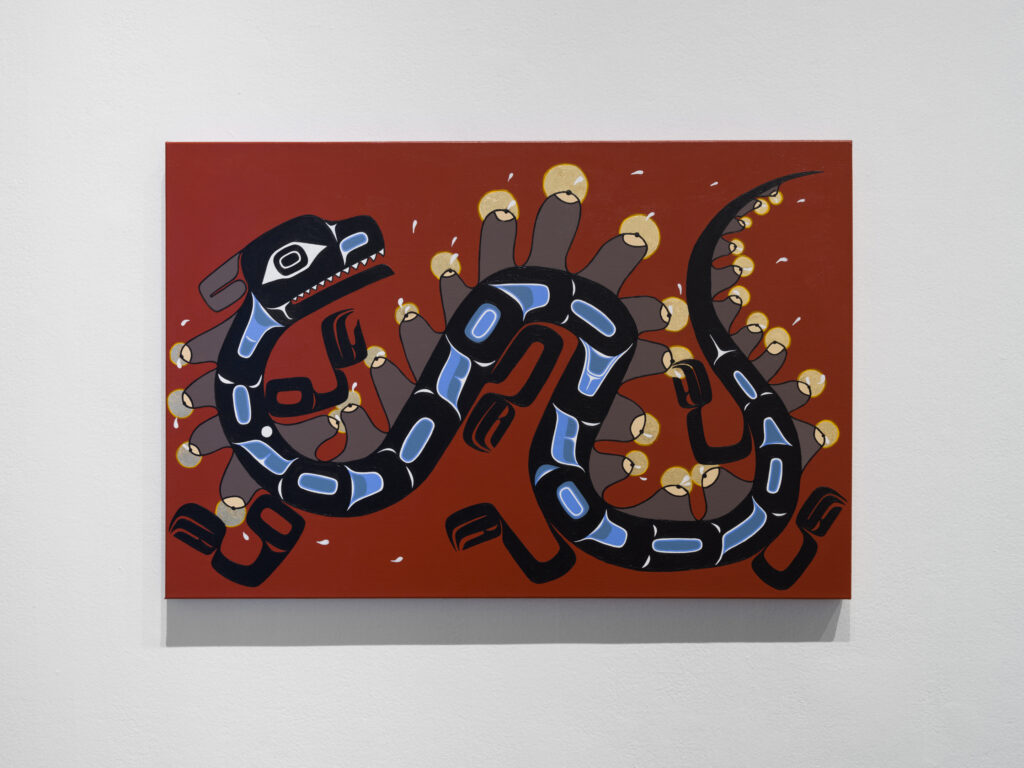LADYKILLER THE MANEATER
ALISON BREMNER
grunt gallery, Vancouver, BC
March 16 – April 29, 2023
REVIEW BY MARIANA MUÑOZ GOMEZ

Ladykiller the Maneater—words loaded with connotations of sexuality and sexism—is a surprising choice for the title of Alison Bremner’s exhibition at grunt gallery. Instead of an analysis of the roles of “ladykiller” and “maneater,” a very different storyline emerges throughout the exhibition. It starts with a painting depicting Bremner’s Ladykiller the Maneater, an imagined deity who has taken the form of a mighty giant eel, awakening from a long slumber into the contemporary world. The deity’s title may point to her power over humanity—she could kill or eat any human she chooses to. When I see what Ladykiller sees of contemporary humanity in the rest of Bremner’s paintings, I realize that Ladykiller appears stunned as she takes in the state of the world.
This collection of paintings continues Bremner’s unique approach to working with formline art and her interest in storytelling. As noted in the exhibition description, the artist creates a fictive narrative of a deity who, through the series of nine paintings, is “loving and gentle in her most natural state but highly carnivorous when agitated.” Visiting the exhibition as a settler who is not very familiar with formline, the stylized aesthetics of Bremner’s paintings encourage my eyes to take time in viewing the works’ complexities, leading me to wonder if difficulty in perception is something Ladykiller may relate to as she contends with making sense of what she is seeing upon awakening.
The exhibition didactic describes the series as “both a manifestation of trauma and a means of processing it.” I get the sense that Ladykiller, having been in a state of deep sleep for an unknowable length of time, feels grief in her experience of this world. Curator Whess Harman contextualizes several of the paintings in the exhibition catalog, likening the individual paintings to glimpses of what Ladykiller sees when she visits humanity: more and more unmarked graves of Indigenous children confirmed at residential school grounds; harms done by the prison industrial complex; youth living through and grappling with violence. Lactation and tears appear as visual cues throughout paintings where Ladykiller, and perhaps other figures, appear. It is as though Ladykiller is shocked into a state of care and grief while confronting humanity’s trauma.

The paintings Midnight at the Fireworks Stand, Lil Baby with Brass Knuckles and Systems Built on Slavery Aren’t Meant to Last may engage with trauma, but they also serve to complicate popular notions of resiliency that only celebrate individuals who are seen as respectable. Quoted in Harman’s essay, Bremner argues that “communities that are very much still dealing with generational trauma inflicted from Western contact” are also enacting resilience as they survive in a world fraught with harmful systems of oppression. Ladykiller embodies this tension that Bremner draws attention to.
Ladykiller is an eel, considered a lowly creature in the artist’s Tlingit culture, yet she is a deity in this story. Ladykiller has the capacity for care—a respectable emotion, symbolized by tears and lactation in this series—as well as the capacity to act violently, which is considered less respectable, as depicted in Street Lights where she is digesting a man. Ladykiller has both softness and capacity for violence within her.
Ladykiller The Maneater upends expectations one might have as they approach the exhibition’s title and vibrancy of the paintings. The story that Bremner shares in this series serves as a reminder to hold space for care and agitation as we confront the dissonance of this world.
Mariana Muñoz Gomez is a settler of colour based in Winnipeg in the unceded lands of Dene and Dakota Peoples, ancestral territories of Anishinaabe, Ininiwak, and Anishininiwak Peoples, and Homeland of the Métis Nation. They are an artist, writer, and curator, and released their self-published book, mapping elsewhere, in 2022.

